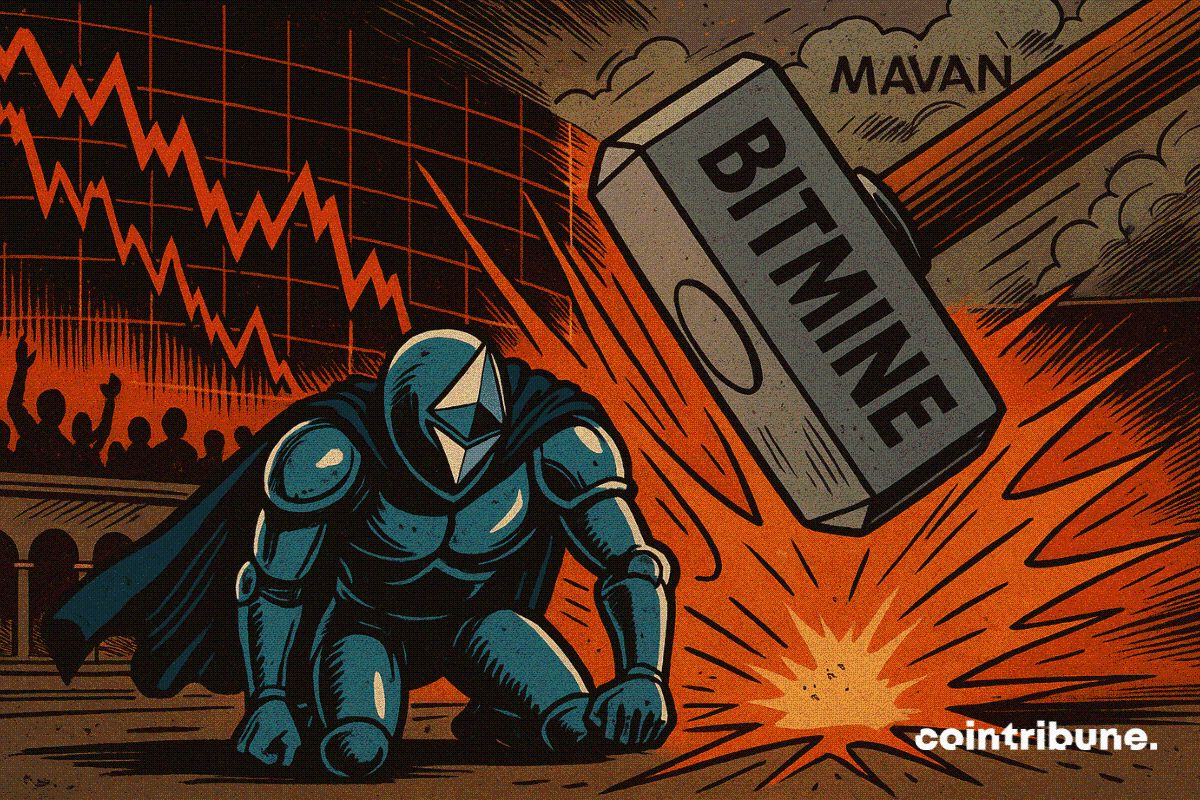Empowered by AI Avatars, How Does TwinX Create Immersive Interaction and a Value Closed Loop?
1. **Challenges in the Creator Economy**: Web2 content platforms suffer from issues such as opaque algorithms, non-transparent distribution, unclear commission rates, and high costs for fan migration, making it difficult for creators to control their own data and earnings. 2. **Integration of AI and Web3**: The development of AI technology, especially AI Avatar technology, combined with Web3's exploration of the creator economy, offers new solutions aimed at breaking the control of centralized platforms and reconstructing content production and value distribution. 3. **Positioning of the TwinX Platform**: TwinX is an AI-driven Web3 short video social platform that aims to reconstruct content, interaction, and value distribution through AI avatars, immersive interactions, and a decentralized value system, enabling creators to own their data and income. 4. **Core Features of TwinX**: These include AI avatar technology, which allows creators to generate a learnable, configurable, and sustainably operable "second persona", as well as a closed-loop commercialization pathway that integrates content creation, interaction, and monetization. 5. **Web3 Characteristics**: TwinX embodies the assetization and co-governance features of Web3. It utilizes blockchain to confirm and record interactive behaviors, turning user activities into traceable assets, and enables participants to engage in platform governance through tokens, thus integrating the creator economy with community governance.
Original source: TwinX
Over the past decade, short video and livestreaming platforms have fully captured users’ attention, giving rise to a massive “creator economy.” However, beneath the dazzling data and traffic, an increasingly unavoidable reality has emerged: most creators neither own the data on these platforms nor can they truly control their own revenue streams—algorithmic black boxes, opaque distribution, unclear commission rates, and high fan migration costs have become typical symptoms of Web2 content platforms.
Meanwhile, the rapid development of AI technology is reshaping content production, especially with AI Avatars, turning the fantasy of “one person appearing in multiple scenarios and operating across time zones” into a practical product capability. In parallel, Web3 is exploring the creator economy through a series of initiatives: rewriting incentive mechanisms with tokens and on-chain ownership, aiming to break the absolute control of centralized platforms over traffic and value.
At the intersection of AI and Web3, a new wave of products is attempting to reconstruct the underlying logic of “content—interaction—value distribution.” TwinX is one of the representatives of this exploration. Its proposed answer: by combining AI avatars, immersive interaction, and a decentralized value system, every expression and interaction can be confirmed, accumulated, and ultimately transformed into configurable and distributable digital assets, rather than simply “remaining on a single platform’s server.”
TwinX’s Positioning: AI-Driven Web3 Short Video Infrastructure
TwinX defines itself as an AI-driven Web3 short video social platform, introducing AI avatars to provide creators and brands with an infrastructure that integrates content production, relationship management, and value settlement.
At the product level, TwinX’s goal is not just to be “another short video app,” but to achieve three things:
Bringing Creation and Interaction On-Chain:
Creators’ content publishing, users’ likes, comments, tipping, and other behaviors can all be confirmed and recorded on-chain, becoming traceable digital asset units.
Connecting All Participants:
Incorporating creators, ordinary users, brands, and developers into a unified ecosystem, lowering collaboration barriers through a unified incentive and settlement system.
Building an Open Network, Not a Platform Island:
TwinX aims to ensure that, under a Web3 architecture, content and data no longer belong solely to a single platform, but instead accumulate into an open value network that can be combined and authorized.
On this basis, TwinX seeks to provide the Web3 industry with a product form closer to “infrastructure,” rather than just a single-point application.
24/7 AI Avatars: The Creator’s “Never Offline” Operations
One of TwinX’s core innovations is the AI digital avatar function built around creators. Unlike traditional virtual IPs or simple bot accounts, TwinX aims to make AI avatars into a “second persona” that can learn, be configured, and operate continuously.
From a product mechanism perspective, the process for creators to generate AI avatars on TwinX roughly includes:
Importing existing content assets: such as past short video clips, voice, and graphic content, to train the avatar’s language style and expression habits;
Setting personality and boundaries: creators can define the avatar’s tone, style, and taboo topics to ensure behavior aligns with personal or brand identity;
Enabling multilingual capabilities: avatars can generate content and converse in multiple languages, helping creators break language barriers and reach more markets.
In practical scenarios, this AI avatar takes on a large amount of work that would otherwise require the creator to be “personally online”:
Continuously interacting with fans in the comments section to maintain content popularity;
Handling basic Q&A, content guidance, and atmosphere maintenance when the creator is offline;
Participating in livestreams or events as a virtual image in specific scenarios, creating “realistic interactions.”
For creators, this is equivalent to gaining a 24/7 operational partner: it extends their “persona online time” and, while mitigating risks, maximizes content influence and community stickiness.
Commercial Closed Loop: An Integrated Path from Content and Interaction to Revenue
Compared to traditional Web2 content platforms, TwinX emphasizes “closed loop” and “transparency” in its commercialization path.
The core logic of the platform’s design is to build a closed-loop ecosystem around creators and users: Content—Interaction—Revenue.
Paid Promotion
Creators can launch paid promotions for key content, with the platform’s algorithm matching more precise audiences for more efficient exposure and conversion.
Virtual Gifts and Tipping
Viewers can tip content through virtual gifts and other means. These actions are recorded as on-chain transactions, making creator revenue settlement transparent and traceable, and making platform commission and distribution rules easier to quantify and audit.
Value-Added Subscriptions and Membership Services
Creators can offer paid subscription services to core fans, unlocking exclusive content, customized interactions, or personalized AI avatar services, thus building a more stable recurring revenue source.
Social E-commerce and NFT/Digital Goods Sales
In TwinX’s roadmap, content and transactions will be further integrated:
· Creators embed links to goods, services, or digital assets in their content;
· Fans complete the closed loop from “viewing content” to “making decisions” through interactive paths, achieving integrated “seeding—conversion.”
Through these designs, TwinX hopes that creators will no longer be just “objects of distribution,” but will become the main body forming a diversified income structure within the platform; and all key links are recorded on-chain, making capital flows and incentive distribution more transparent.
A Creator’s Day: From Avatar Generation to Data and Revenue Review
From the perspective of a single creator, a day on TwinX can be broken down into the following stages:
① Building the Account and Avatar
The creator binds their Web3 identity by connecting a wallet, creates a TwinX account, and generates an AI avatar. Training data comes from their existing content materials. Once set up, the avatar takes over some basic interaction tasks.
② Planning and Generating Content
The creator determines topics based on market trends and personal positioning, then submits materials and general direction to TwinX’s AI tools. The AI avatar generates the initial script, virtual image, and voiceover, with the creator making final reviews and edits.
③ Publishing and Distribution
After content is published on TwinX, the platform’s recommendation engine pushes the work to potential high-match audiences based on user profiles, behavior, and on-chain data. During this process, the AI avatar can supplement with additional content (such as short posts or updates) to maintain topic heat.
④ Interaction and Operations
Throughout the day, the creator and avatar jointly handle “dialogue” tasks:
The creator personally replies to key comments;
The AI avatar handles a large number of routine Q&As, emotional responses, and guides attention/subscriptions.
⑤ Data and Revenue Review
At the end of the day or cycle, the creator can view the following through TwinX’s data dashboard:
· Operational metrics such as content views, interaction rates, and conversion effects;
· Income from virtual gifts, value-added subscriptions, and product purchases;
· Corresponding token rewards, platform incentives, and asset changes.
This entire process reflects what TwinX emphasizes: from building accounts and avatars, to content production, traffic distribution, community operations, and finally to revenue settlement and data review, forming a sustainable and iterative closed loop.
Web3 Empowerment: Turning Interaction into Assets, Turning Participants into Co-Governors
Compared to traditional content platforms, TwinX’s Web3 features are mainly reflected in two aspects: assetization and co-governance.
First, interactive behaviors are assetized.
In TwinX’s framework, content itself and its derivative interaction records can be confirmed and registered via blockchain. This means:
· Every like, comment, share, and tip becomes a traceable on-chain record;
· Content influence can be accumulated as a quantifiable “asset profile” through data.
Second, participants move from “users” to “co-governors.”
TwinX’s economic model includes a native token to connect internal incentive distribution and governance mechanisms. Typical paths include:
· Distributing part of the platform’s growth dividends to creators and active users through “content mining” and “behavioral incentives” models;
· Token holders can express opinions on key issues such as platform development direction and incentive pool allocation through staking or governance voting;
· The platform also reserves corresponding contribution incentives for developers, nodes, and ecosystem partners.
This mechanism means: TwinX not only provides tools for creators, but also attempts to let “platform users” gradually become “co-creators of platform rules,” binding the creator economy with community governance.
Conclusion: From Product Experience Innovation to Industry Paradigm Exploration
TwinX represents not just a new product, but an attempt to redesign short video platforms around the AI avatar + Web3 architecture:
On the supply side, AI avatars and content generation tools unleash creators’ limits in terms of time and energy;
On the demand side, immersive interaction and a more transparent incentive system enhance user engagement and retention;
At the underlying level, on-chain confirmation and token economics turn content and interaction into measurable and configurable assets, introducing community co-governance logic.
Currently, TwinX is still in the early stages of product refinement and market expansion. Its model’s performance with larger-scale users and more complex scenarios remains to be seen. However, in the “AI + Web3” intersection track, projects like TwinX—which start from the product experience layer while also considering economic models and governance architecture—are providing new references for the industry.
For industry participants and investors interested in the future direction of the creator economy, what TwinX represents is not just a single-point application, but a path worth continuous observation—when creation, interaction, and value distribution are no longer monopolized by a single platform, what new forms might short video and social networks take?
This article is a submission and does not represent the views of BlockBeats.
Disclaimer: The content of this article solely reflects the author's opinion and does not represent the platform in any capacity. This article is not intended to serve as a reference for making investment decisions.
You may also like
What are the five major changes that Beam Chain will bring to Ethereum?
Beam Chain is not a new blockchain in the literal sense, but rather a new infrastructure built within the Ethereum mainnet that will significantly enhance the transaction speed, security, and efficiency of the L1 mainnet.

Staking Ethereum: BitMine's Ultimate Plan to Survive the Market

Solana and XRP ETFs resist as Bitcoin faces record withdrawals

Brutal Correction Hits Speculative Crypto Sectors

